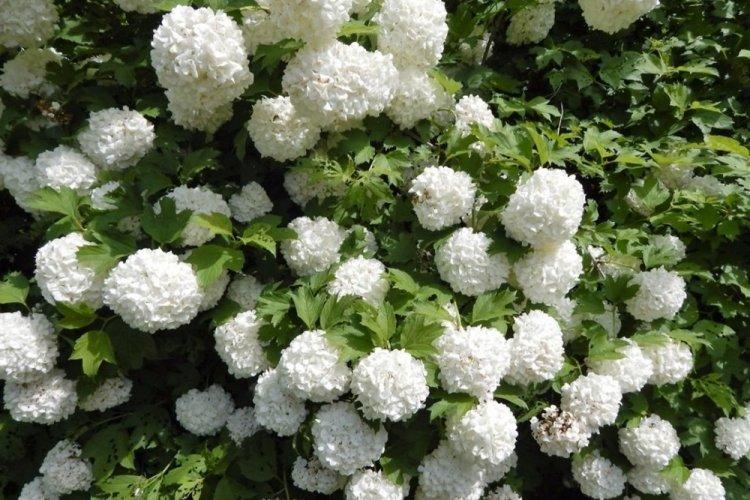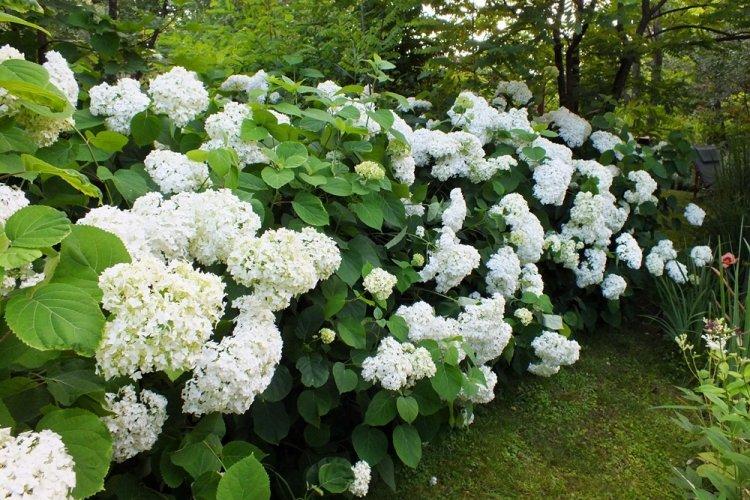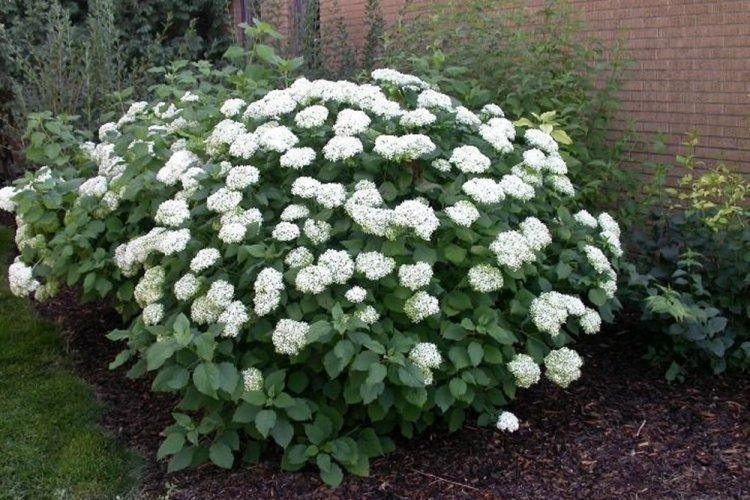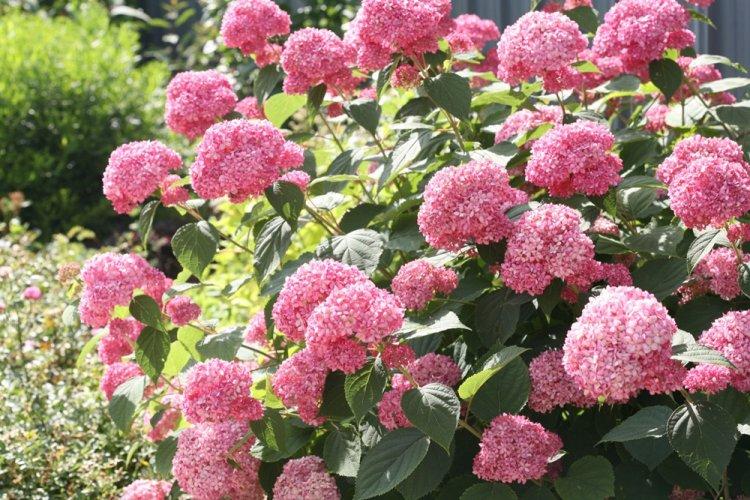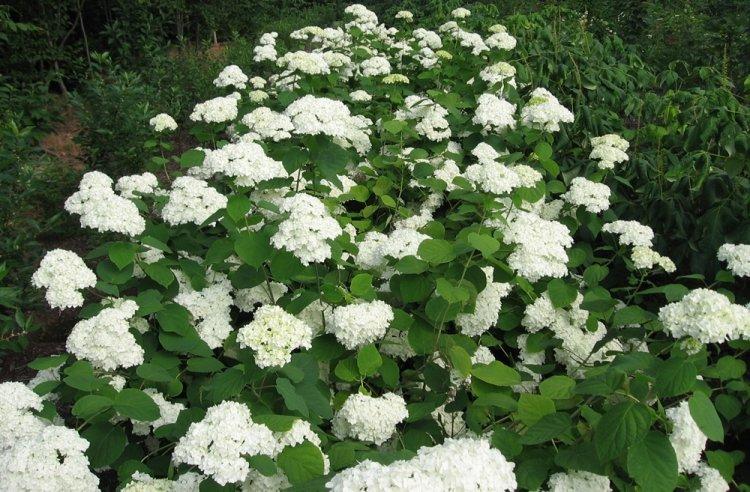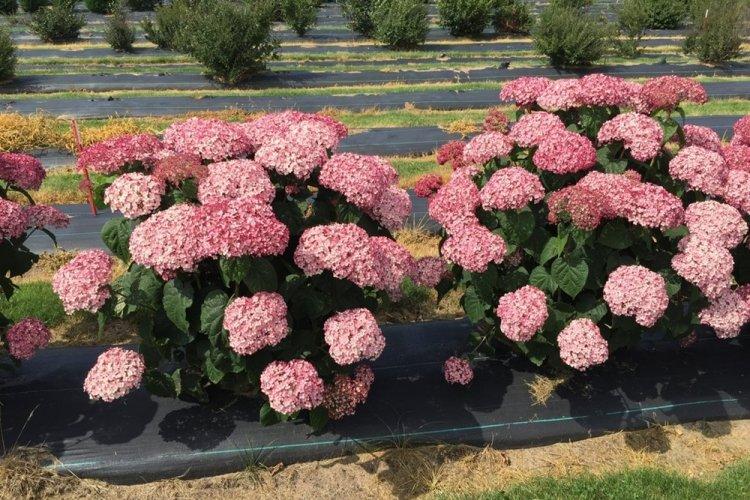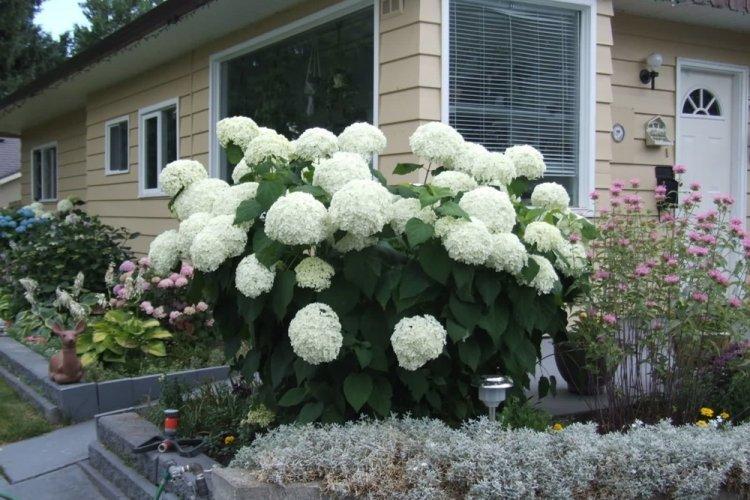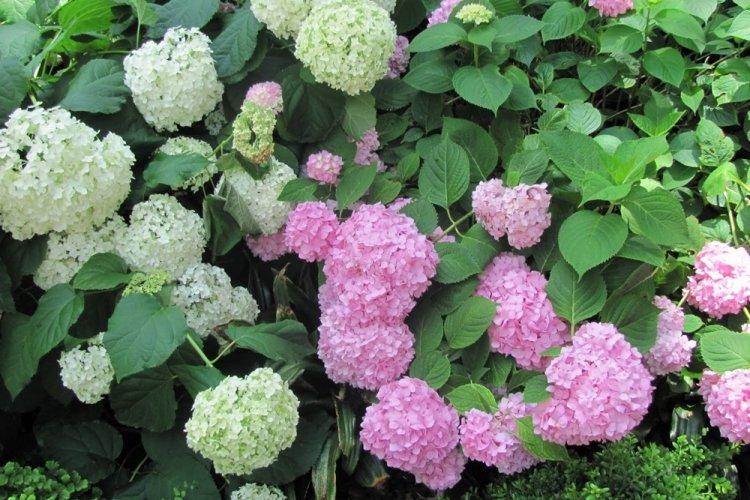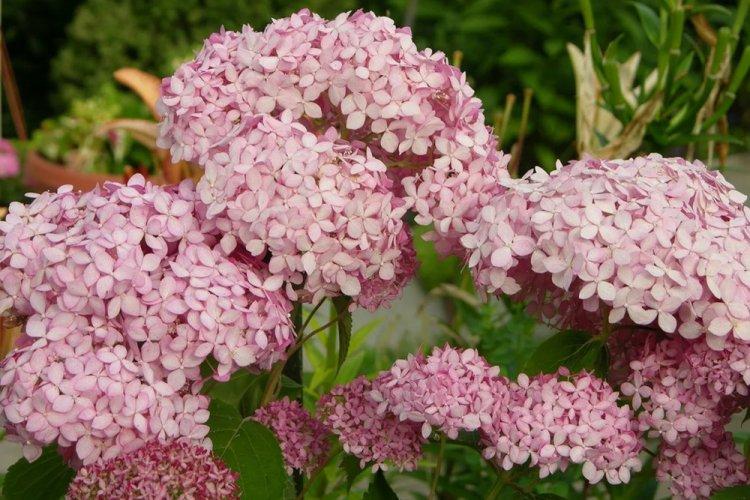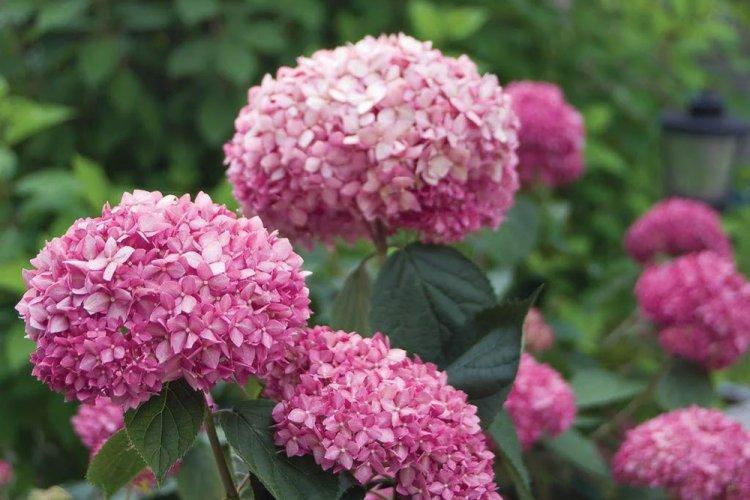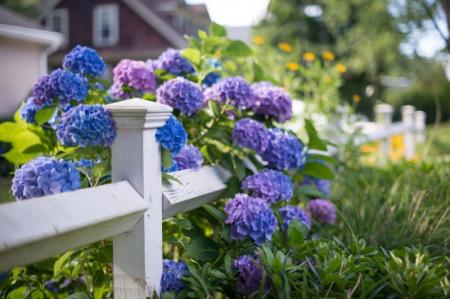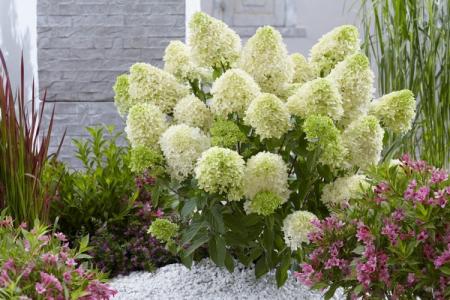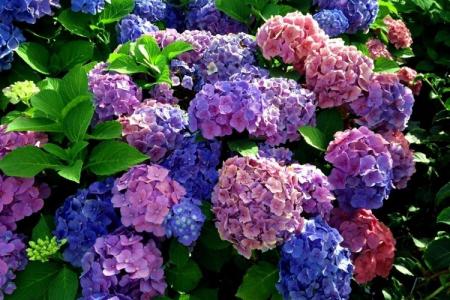
Treelike hydrangea is a large, tall shrub with lush white inflorescences. They differ from other species of the family in the specifics of cultivation and care. Rounded bushes are good in summer cottages, in landscape compositions and green hedges. We will tell you what they are and what are their features!
general information
Treelike hydrangea is one of the types of garden hydrangea that came to us from the East and Sakhalin. Some varieties come from North America and naturally grow up to 3-4 m. In the garden, they usually grow only up to 1-2 m and are used as an ornamental shrub.
A lush voluminous bush forms thin pubescent shoots with oval or ovoid leaves. The plates are large, up to 20 cm, and bright green, against which the snow-white caps of the inflorescences look even more impressive. Long, thin petioles diverge from the stem opposite each other - this is called opposite growth.
Unlike paniculate hydrangea, the tree-like hydrangea has corymbose inflorescences up to 15 cm in size. They are formed by relatively small white flowers up to 1.5-2 cm in diameter. Flowering is very lush and abundant, and lasts from mid-summer until the first cold in October.

Treelike hydrangea varieties
In our latitudes in horticulture, varieties with white flowers are most often found. Moreover, in the process of flowering, the shade changes from light green and greenish to snow-white. Treelike hydrangeas are also called white artisanal hydrangeas, and the British called them snowy hills.
Hydrangea tree Annabelle
One of the most popular varieties is notable for its very large balls-inflorescences. They are much larger than average and grow up to 25 cm, which is why they sometimes lie down under their own weight. Shrubs grow up to only 1.5 m, but they grow up to 3 m wide.
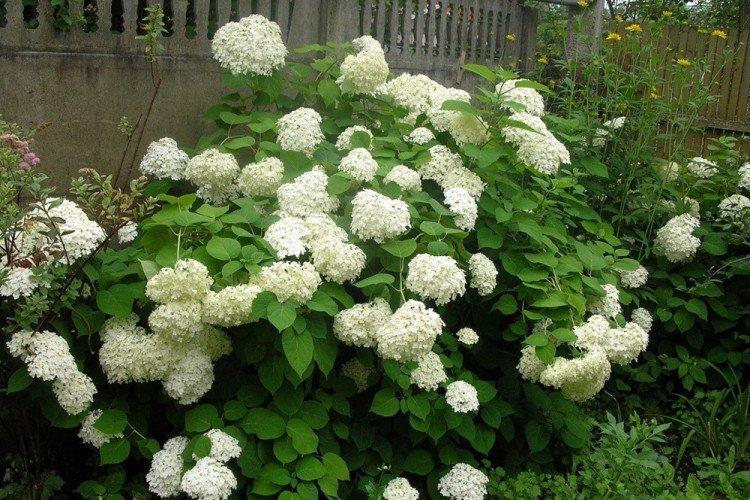
Hydrangea treelike Pink Annabelle
A hybrid variety based on the Annabelle tree hydrangea is also called Invincibell. It is the first variety in a delicate shade of pink and has been recognized as one of the best new varieties in the 2010s. If you prune the bush in time after flowering, Pink Annabelle will bloom again in six weeks.
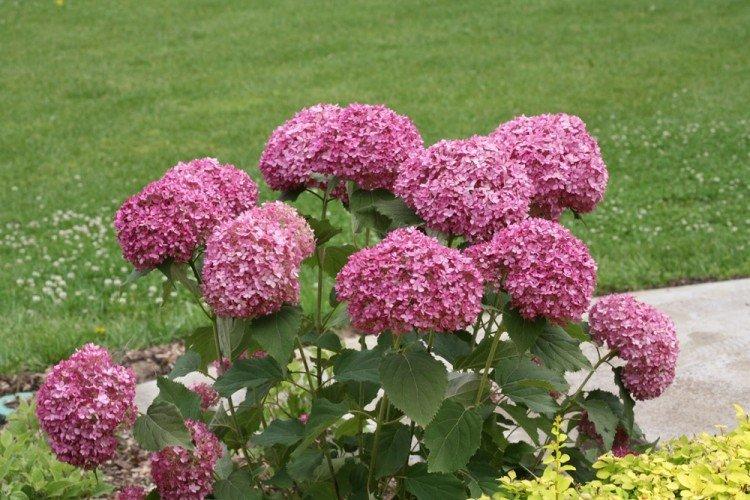
Hydrangea tree Strong Annabelle
Another hybrid based on the Annabelle variety is notable for its resistance to external conditions. Its shoots are more powerful, and large, lush inflorescences do not linger under their own weight. This hydrangea is not afraid of heavy rains and gusts of wind.

Hydrangea tree White House
The White House variety looks interesting due to its delicate creamy shade. An unusual feature is the structure of the inflorescences, because fertile flowers are hidden in the middle, and large sterile ones are at the edge. The shrub grows up to 1.4 m and goes well with other species.

Hydrangea tree bounty
Bounty is one of the most light-loving varieties, so it feels good even without midday shade. He has very small snow-white flowers, collected in a large bouquet-inflorescence.

Hydrangea treelike Grandiflora
Treelike Grandiflora is notable for very long flowering. During this time, the flowers change their shade several times from light green to snow-white, and then warm cream. It is a large shrub that can grow up to 2.5-3 m, in contrast to its more compact counterparts.
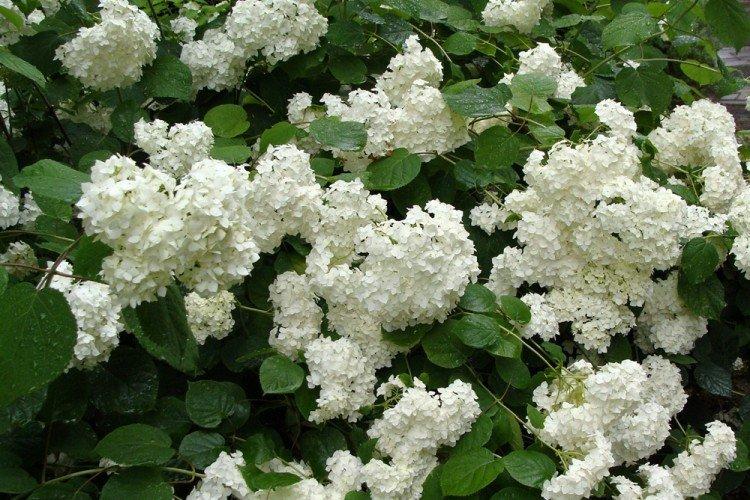
Hydrangea tree Pink Pinkushen
One of the most unusual varieties is distinguished by the shape of the inflorescence. Here it is not spherical, but pyramidal, so such a hydrangea amazingly diversifies the garden composition. Pink Pinkushen looks wonderful even when it fades.
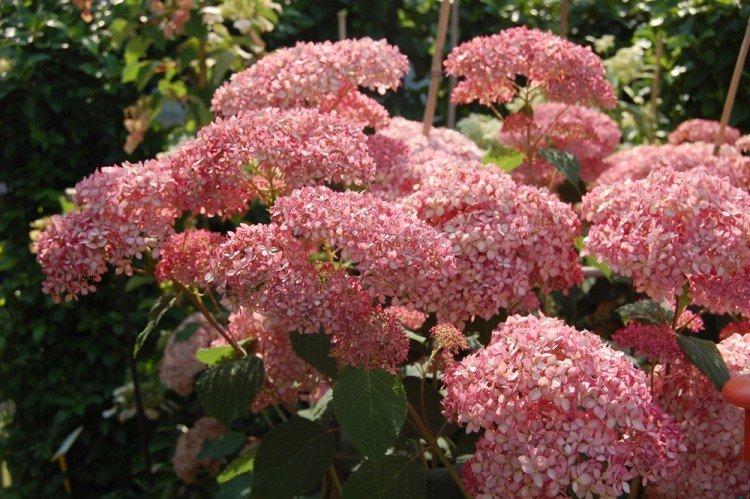
Hydrangea tree Hayes Starburst
This is the first variety of treelike hydrangea with large double flowers, collected in large rounded inflorescences.Due to the texture of the petals, they seem even larger, although they already grow up to 25 cm with a small shrub height - about 1 m. Because of this, the shoots may not support the weight of the inflorescences.

Tree hydrangea care
Gardeners appreciate the tree hydrangea for its good winter hardiness, fast growth, ease of rooting and abundant flowering. Modern varieties are unpretentious to soil, temperature and weather extremes.
Temperature
Hydrangeas do not need any special temperature conditions outside in the garden. This is a winter-hardy plant, but in the middle latitudes and further north for the winter it is better to cover the shoots with spruce branches or a special cloth. Even if the shrub freezes, it will quickly recover in spring and bloom on schedule.
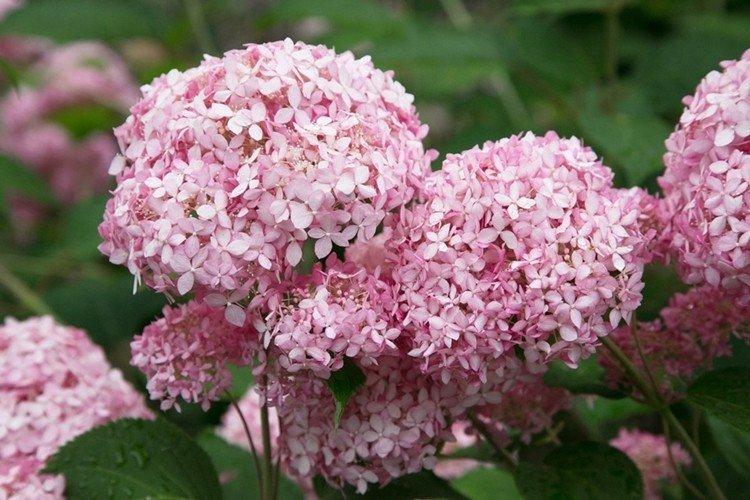
Lighting
Despite the abundant flowering, the tree hydrangea does not like an excess of bright sun. To avoid burns, try to choose a place so that it is in partial shade at noon. Then the bushes grow larger and bloom more abundantly.

Watering
Treelike hydrangea loves moisture, so it tolerates overflows better than drought. Provide shrubs with regular watering of 15-20 liters 1-2 times a week. When it rains, you can reduce the frequency so that the root system does not start to rot.
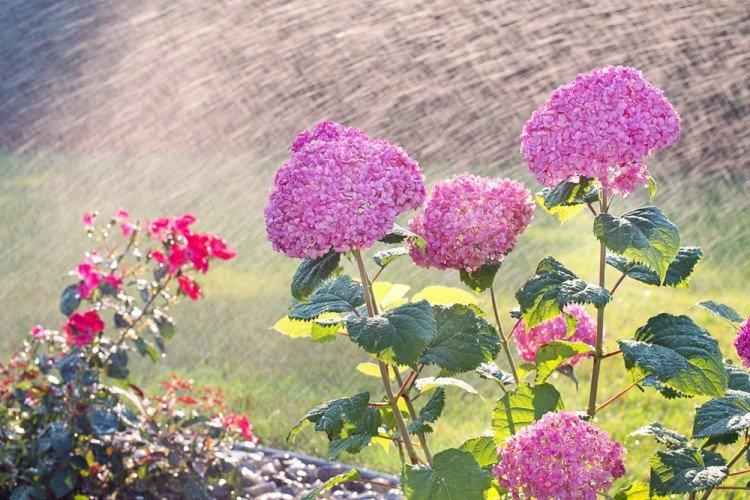
The soil
Hydrangeas love loamy soils of medium and high acidity, but they do not tolerate alkaline soil well. Use peat, compost, turf and leaf humus before planting. Do not forget about mulching the soil immediately after germination of the shoots in a layer 5-8 cm thick.
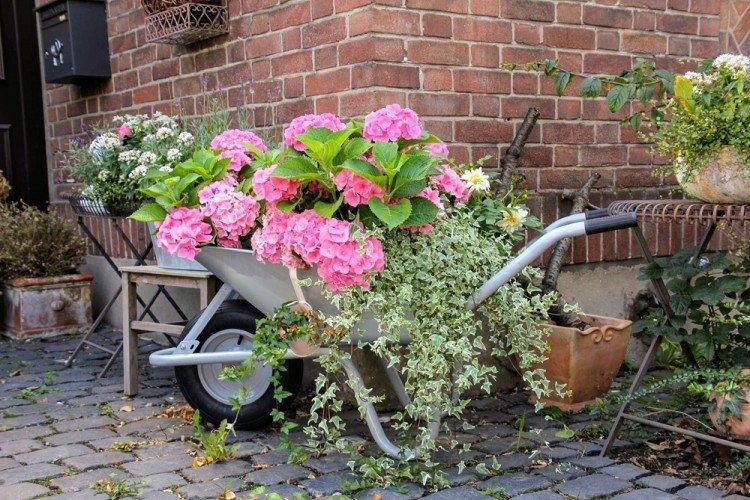
Fertilizers and feeding
The lushly blooming tree hydrangea loves fertilization, so it is fed four times on schedule. Complex nitrogen fertilizers in early spring to gain green mass, and then potassium and phosphates - during the formation of buds. The remaining dressings were evenly distributed throughout the summer.

Transplant and reproduction
Mature, powerful shrubs can be propagated by division during transplantation. Another convenient way is layering, which you need to dig in by 1.5-2 cm and give them support. The next year, these layers can be separated and transplanted from the mother plant.
Hydrangea cuttings always take root, but they must be prepared in advance - in early June or in the middle of summer, before the lignification of the shoot. Cut off the stem with 2-3 pairs of leaves and treat the cut with a root growth preparation. The rooting process in a shady place under a bottle or in a greenhouse takes up to a month.
Hydrangeas are transplanted in early spring before budding, but container seedlings can be planted throughout the season. Make sure not to damage the earth ball and root system. Immediately after transplanting, you need to prune and water the bush generously, and after 3-4 weeks - feed.

Pruning
Young plants after planting need to be pruned and all damaged and weak shoots removed so that they grow lush and strong. For the next couple of years, do not touch the shrubs and only in the fourth year in early spring begin to carry out formative pruning before feeding. You can rejuvenate old bushes by radical pruning of all branches up to 50 cm.
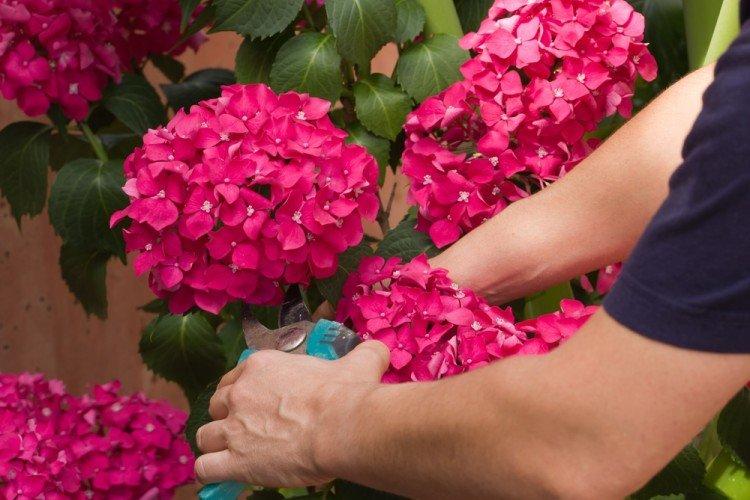
Pest and disease control
Most hydrangea diseases provoke improper care and conditions of detention. These are chlorosis, leaf burns, rotting of the root system, yellowness, leaf fall. In these cases, it is enough to adjust the regime, adjust the schedule of irrigation and fertilization, and create a shadow.
Fungal diseases are treated with special preparations - fungicides and antiseptics. To do this, you first need to get rid of damaged areas and excessive moisture. Viral ring spot is not cured, so diseased shrubs will have to be removed before the disease spreads further.
The most dangerous enemy of the tree hydrangea is nematodes, which are difficult to fight. Do not forget about routine preventive treatment to minimize the risk of injury.Of other parasites and pests, hydrangeas are loved by slugs, aphids and spider mites, which can be removed mechanically and with insecticides.
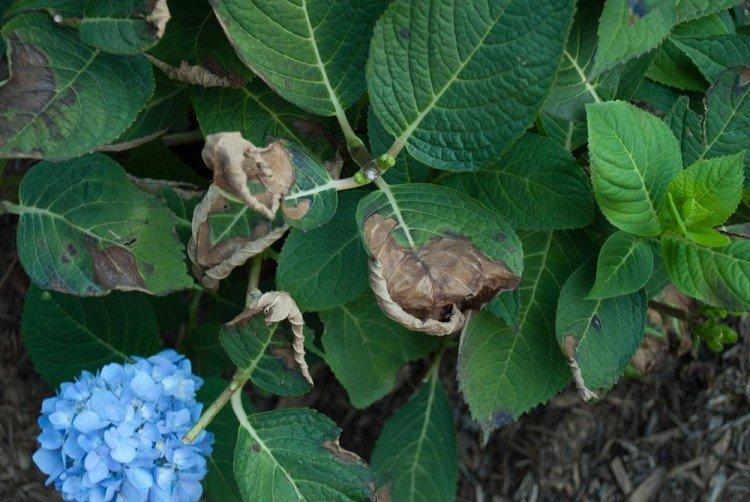
Treelike hydrangeas - photo
Although the tree hydrangea is not as diverse as compared to its paniculate counterparts, it is still very spectacular and beautiful! Not only experienced gardeners, but also amateur beginners will be able to cope with it. If you are still in doubt, take a look at our selection of photos!

